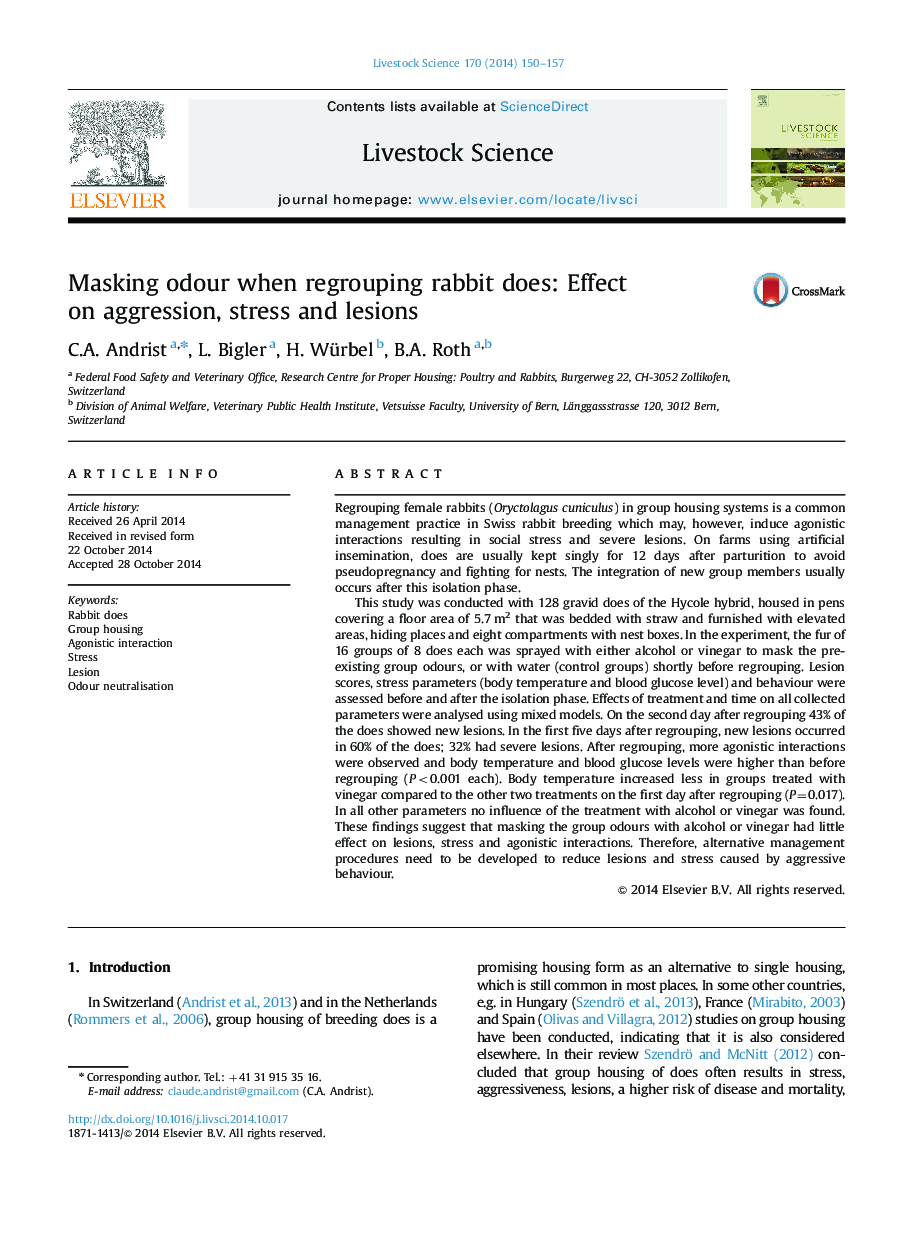| کد مقاله | کد نشریه | سال انتشار | مقاله انگلیسی | نسخه تمام متن |
|---|---|---|---|---|
| 2447177 | 1553962 | 2014 | 8 صفحه PDF | دانلود رایگان |
• Five days after regrouping female rabbits in a group housing system, 60% showed lesions.
• After regrouping, more agonistic interactions were observed.
• The stress parameters (body temperature and blood glucose level) were higher than before regrouping.
• Masking the group odours with alcohol or vinegar before regrouping hadno effect on lesions and aggression.
Regrouping female rabbits (Oryctolagus cuniculus) in group housing systems is a common management practice in Swiss rabbit breeding which may, however, induce agonistic interactions resulting in social stress and severe lesions. On farms using artificial insemination, does are usually kept singly for 12 days after parturition to avoid pseudopregnancy and fighting for nests. The integration of new group members usually occurs after this isolation phase.This study was conducted with 128 gravid does of the Hycole hybrid, housed in pens covering a floor area of 5.7 m2 that was bedded with straw and furnished with elevated areas, hiding places and eight compartments with nest boxes. In the experiment, the fur of 16 groups of 8 does each was sprayed with either alcohol or vinegar to mask the pre-existing group odours, or with water (control groups) shortly before regrouping. Lesion scores, stress parameters (body temperature and blood glucose level) and behaviour were assessed before and after the isolation phase. Effects of treatment and time on all collected parameters were analysed using mixed models. On the second day after regrouping 43% of the does showed new lesions. In the first five days after regrouping, new lesions occurred in 60% of the does; 32% had severe lesions. After regrouping, more agonistic interactions were observed and body temperature and blood glucose levels were higher than before regrouping (P<0.001 each). Body temperature increased less in groups treated with vinegar compared to the other two treatments on the first day after regrouping (P=0.017). In all other parameters no influence of the treatment with alcohol or vinegar was found. These findings suggest that masking the group odours with alcohol or vinegar had little effect on lesions, stress and agonistic interactions. Therefore, alternative management procedures need to be developed to reduce lesions and stress caused by aggressive behaviour.
Journal: Livestock Science - Volume 170, December 2014, Pages 150–157
